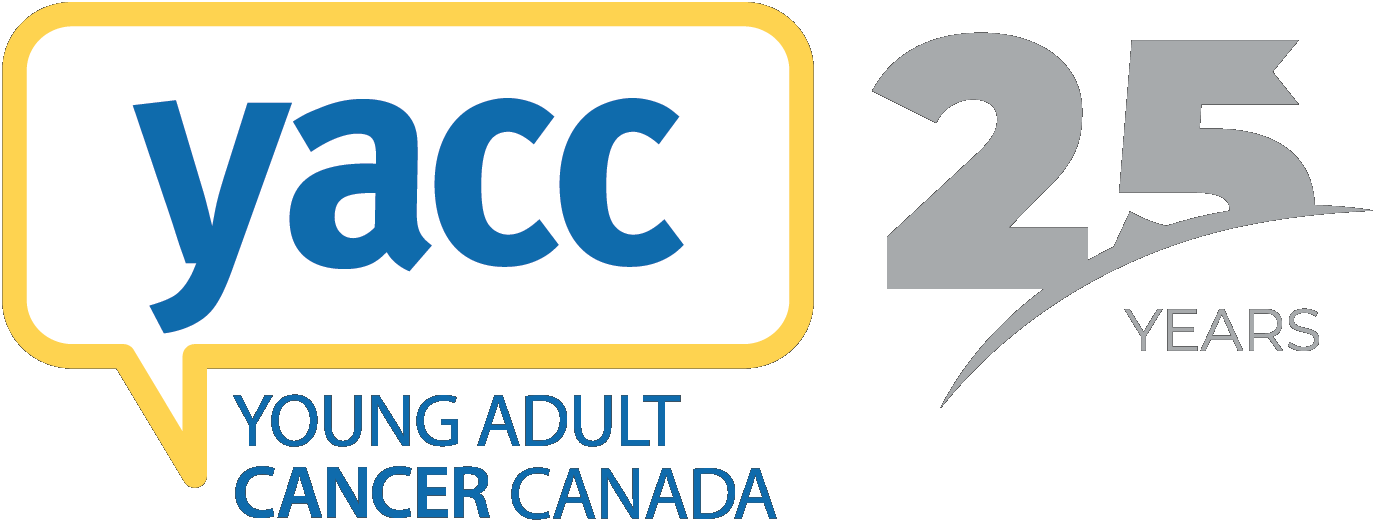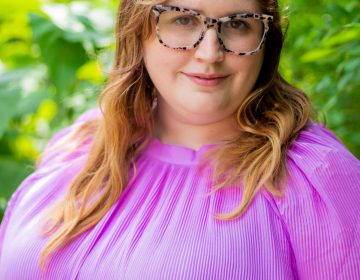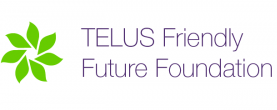By Gabrielle Fecteau
 Happiness can allude cancer thrivers for many reasons: trauma, treatment, side effects, losses, and so many of the other difficult aspects of one’s cancer experience. At the same time, cancer thrivers are often happier than many would think possible in such a life-threatening situation.
Happiness can allude cancer thrivers for many reasons: trauma, treatment, side effects, losses, and so many of the other difficult aspects of one’s cancer experience. At the same time, cancer thrivers are often happier than many would think possible in such a life-threatening situation.
I see my experiences with cancer as some of the best and worst moments of my life. As much as despair seemed to constantly linger in the shadows, happiness seeped through in the most unexpected and special ways.
Lately, I have been tasked with the mission to explore happiness in my life as a cancer thriver. The motivating question: how does one cultivate happiness as a cancer thriver?
My research took me to the Scandinavian countries of Denmark, Sweden, and Finland. This trip abroad was done from the comfort of my own home, although I do wish to explore these countries one day.
Why these Scandinavian countries? They are among the happiest reported countries according to the latest World Happiness Report.
Like the rest of the world, I asked myself, “why are these people as happy as they are?”
In these cultures, I noticed that they used terms that cannot be properly translated in English without losing their essence. Many of them help to explain practices that increase happiness.
LYKKE (lik-eh)
Lykke is a Danish concept that translates to “happiness.”
This concept was made popular by the The Little Book Of Lykke: The Danish Search For The World’s Happiest People by Meik Wiking. Throughout this book, Wiking refers to the pillars that support the idea of happiness –togetherness, money, health, freedom, trust, and kindness.
In the life of a cancer thriver, lykke can be very useful to increase levels of happiness. The pillars can work to solidify your capacity to attract happiness to your life.
Togetherness can be added to your life through your community. Your community can be made up of family and friends that show up for you. To be with other beings serves as an antidote to loneliness, a common barrier to being happier. Although you might have lost some people, you believed were part of your community, I am certain you have gained valuable members.
Money, although not central to happiness, aids in one’s pursuit of happiness as per this concept detailed by Wiking. It does not have to be a lot of money, which might come as a relief to you considering that studies demonstrate that many cancer thrivers lose most of their life savings to a cancer experience. Whatever money you may have, think of buying experiences with the ones you love or for your own self-care which will last much longer than an object might.
Health may seem as unattainable as money as a pillar to happiness, but don’t get discouraged. As a cancer thriver, you may still have the opportunity to use your health as a way towards being happier. Strive towards feeling better rather than being sickness-free. This type of health is more in your control as you can work towards healthy habits such as exercise, lower stress levels and better nutrition.
Freedom, trust, and kindness are the other pillars of happiness. Start small when you think of balancing your life and being a patient (freedom); trusting yourself, your body and others anew (trust); and, especially, taking action for good (kindness).
Slowing working on building these pillars in your life is said to be able to have an impact on your happiness. Always worth a try.
Interesting article on lykke: “Lykke life: Six pillars of happiness found across the globe”
HYGGE (hew-gah)
Hygge is a Danish concept that roughly translates to “a characteristic of cosiness and comfortable conviviality that engenders a feeling of contentment or wellbeing.”
This must be one of my favourite concepts. To me, hygge is about getting your soul all cozy and smiling. When you feel at peace in your safe space, you are better able to be in the moment and therefore get to enjoy the little pleasures in your life.
As a cancer thriver, I think of it as a way to bring happiness in my life through my environment which aids in the pursuit of making my internal self happier. You can add pillows and blankets, dim the lighting, burn candles, use incense, etc. Hygge can also be a gratefulness practice or journal. Ultimately, it is about creating a safe space for yourself to retreat to on good — and not so good — days.
Interesting article on hygge: “The year of hygge, the Danish obsession with getting cozy” and “Here’s to hygge: The cozy Danish lifestyle”
FIKA (fee-ka)
Fika is a Swedish concept that roughly translates to “a break in the day for coffee and something sweet, expressly for the purpose of setting aside a moment for quality time.”
In my opinion, this is where these Scandinavian concepts linked to happiness get really interesting. Fika is meant to refer to having a hot drink with friends in the morning and the afternoon. It is a moment created to help one slow down and appreciate the best of things in life.
As cancer thrivers, we deal with isolation in many forms. Our work is also our lives. Being a person living with cancer is a lot of work. As you intentionally learn to practise fika, you will inevitably be forced to reach out to others. This may lead to less isolation. I really think that this simple practice, in whatever for you are able to practise it, can increase your connections and your levels of happiness.
Interesting articles on fika: “The Swedish concept of fika can make you more productive” and “5 Scandinavian life philosophies that can make you happier”
LAGOM (law-gum)
Lagom is a Swedish term that translates roughly to “living with just enough.” In other words, it is about finding just the right amount in your life.
This is no easy task. But, as a cancer thriver, I believe this is essential. Primarily, I have found this to be important as I balance my will to live, my fear of dying, and body’s limits. For me, when I live with just enough, doing just enough, I am much happier.
I have therefore worked to create just enough “living” in my life. To get this need to live “just right.”
At the same time, I have wohked to limit and add in other aspects of my life. On one hand, I strive not to have too many objects in my house and not too much screen time. On the other hand, I ensure that I do not have too little time outside and enough interactions with my friends within my cancer communities.
Interesting articles on lagom: “Goodbye hygge, hello lagom: Secret Swedish contentment” and “Move over hygge: Why lagom is the Scandinavian lifestyle concept we really need”
SISU (si-soo)
Sisu is a Finnish concept that roughly translates to “the psychological strength that allows a person to overcome extraordinary challenges.”
This is my ultimate favourite concept when I consider what it means to me to be a cancer thriver. I feel like it encompasses the mix of endurance, tenacity, strength, and bravery that I had to muster throughout this entire experience (and continuing).
Emilia Lahti talks about sisu being all about an action mindset. It requires determination and resilience — a will to succeed despite the odds. Through it all, you stick with it (even if for cancer thrivers there is no other choice).
The most interesting aspect of sisu, in my opinion, is that it all needs to be done with kindness. I am not great at this aspect of sisu. Nevertheless, I do believe that this might be a key missing ingredient for me to be happy. To go through your cancer experience with kindness for yourself and others seems like the missing cherry on top.
Interesting article on sisu: “The glossary of happiness”
KALSARIKANNIT (kal-sa-ri-kan-it)
Kalsarikannit is a Finish concept that roughly translates to “getting drunk in your underwear, with no intention of going out.”
I do not believe I need to say any more on the matter. This (minus the getting drunk part for me personally) screams happy to me. Just the idea is making me chuckle.
Interesting articles on kalsarikannit: “Finnish trend kalsarikannit in Vogue archives” and “The Finnish have a word for drinking at home in your underwear”
Becoming happier as a cancer thriver
As a cancer thriver, I know that many of the essence that these words represent can help me cultivate more happiness.
The learnings I take away from these concepts:
Each one refers to one’s intentions. Living with intention seems to be a common factor that increases happiness. As a cancer thriver, living with intention is not always easy. Many barriers make it difficult to live in the present moment with intention. It is then in the little moments that intention drives happiness.
There are no real rules or guidelines to happiness, but you make your own. Each of these concepts are vague enough for you to have enough control over how they can be incorporated in your life. You are then free to implement these concepts in whichever way is best for you to increase your own happiness levels.
Happiness is as simple as you want it to be. To be happy does not have to be complicated. You can keep it simple by concentrating on the little things in your life, the very special moments that make part of your cancer experience.
Slowing down and reconnecting is key to happiness. Each of the concepts described above refer to the art of slowing down your life to be able to connect with each moment that goes by to take a simple breath. You might want to run past many of the hours, days, weeks, or months of your life. By doing so, you might be running past the pains of a cancer experience, but you are also running past moments of great happiness. Slow down to be happier despite cancer.
Many smiles,
Gabrielle
Feature photo credit: Karine Chalifour








